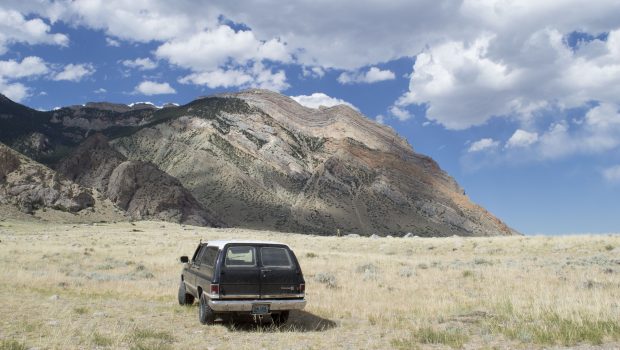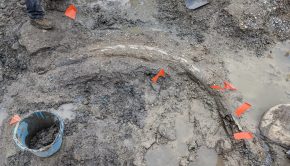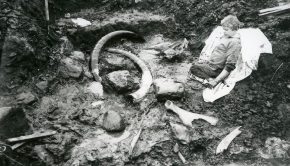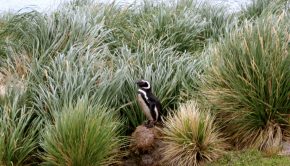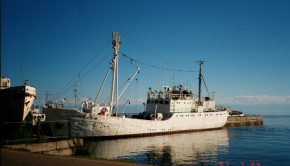Episode 68: Fossil plants and the Paleocene Eocene thermal maximum
The Bighorn Basin in Wyoming has been an important area for research into terrestrial ecosystems for decades. The basin formed as part of the uprising of the Rocky Mountains in the west of North America, and sediment from the surrounding mountain ranges was transported into it for millions of years, building up a huge thickness that has fossils from all kinds of life on land preserved within it. Rocks from many different time periods are now exposed in the basin, but a particularly important one is the Paleocene Eocene thermal maximum (PETM) which occurred around 56 million years ago. At this time a huge amount of carbon was released into the atmosphere very quickly, causing a sharp (by geological standards) increase in temperature and dramatic effects on life. Palaeontologists and geologists are particularly interested in studying the PETM as it can potentially give us lots of information about how life and earth systems might respond in the near future to the large quantities of carbon being released into our atmosphere now by humans.
In this episode recorded in the field we talk to Dr Scott Wing, who is curator of fossil plants at the Smithsonian in Washington DC but has been coming to the basin every summer for decades. We chat about the geology and history of the area, what it’s like to work in the Wyoming desert every summer, how to find and collect fossil plants, and what years of research by many people in the basin has told us about the PETM.
Podcast: Download (Duration: 1:06:16 — 91.0MB)
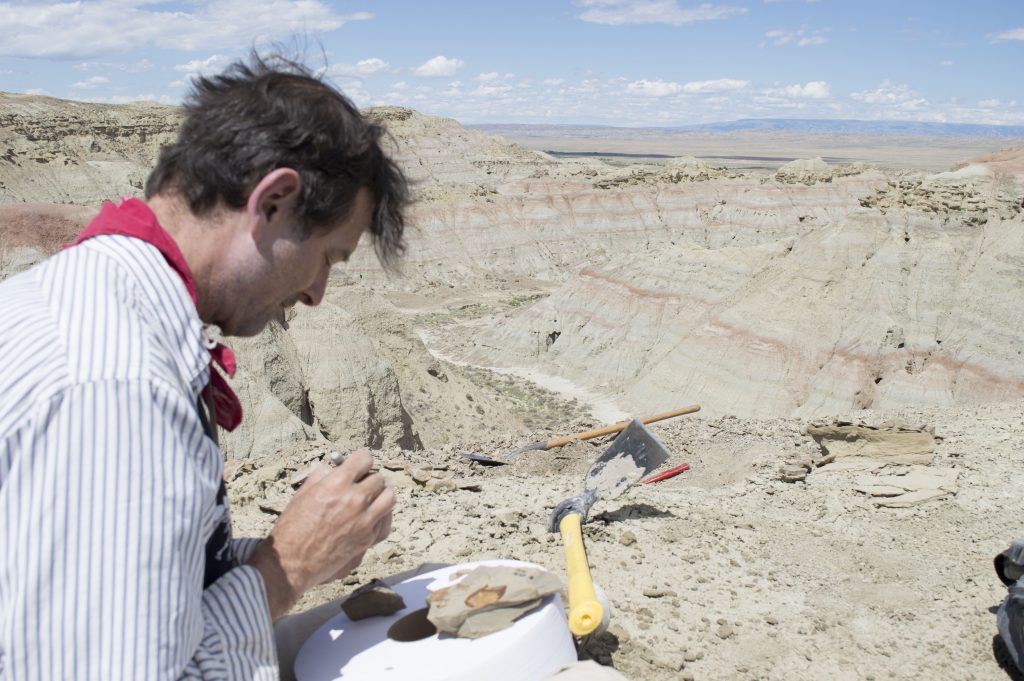
Scott Wing at a PETM plant site in the north of the Bighorn Basin, labeling a fossil plant find and preparing to wrap it in a protective toilet roll bandage for the journey back to camp. Image credit Laura Soul
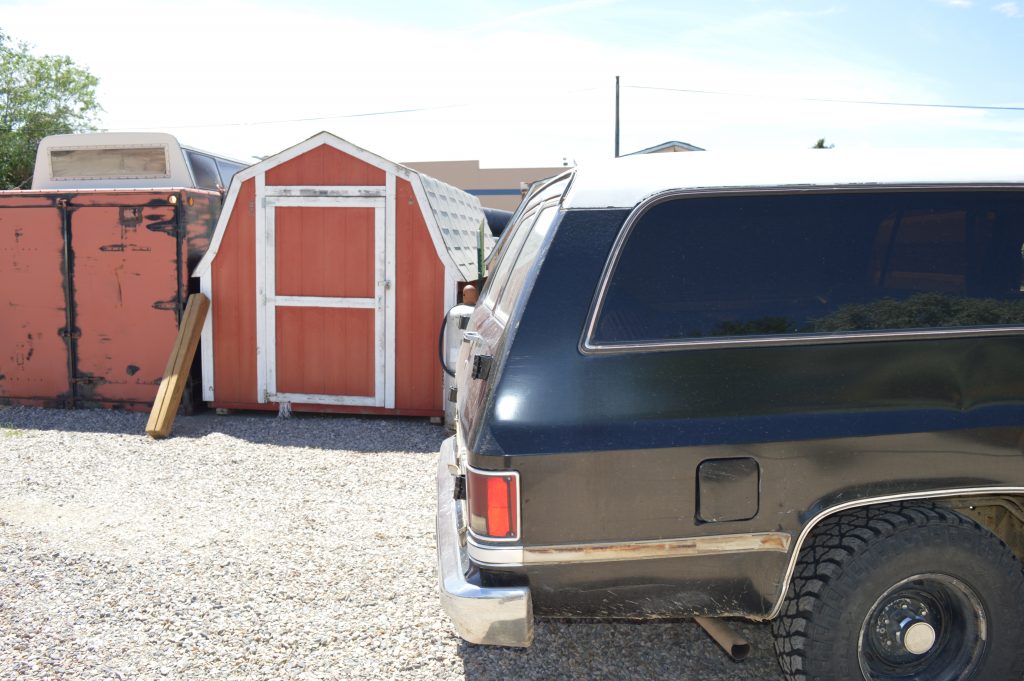
The field vehicle affectionately known as 8-ball, parked outside the ‘field shed’ where Scott stores all the equipment needed for the field, while it’s not in use. Image credit Laura Soul
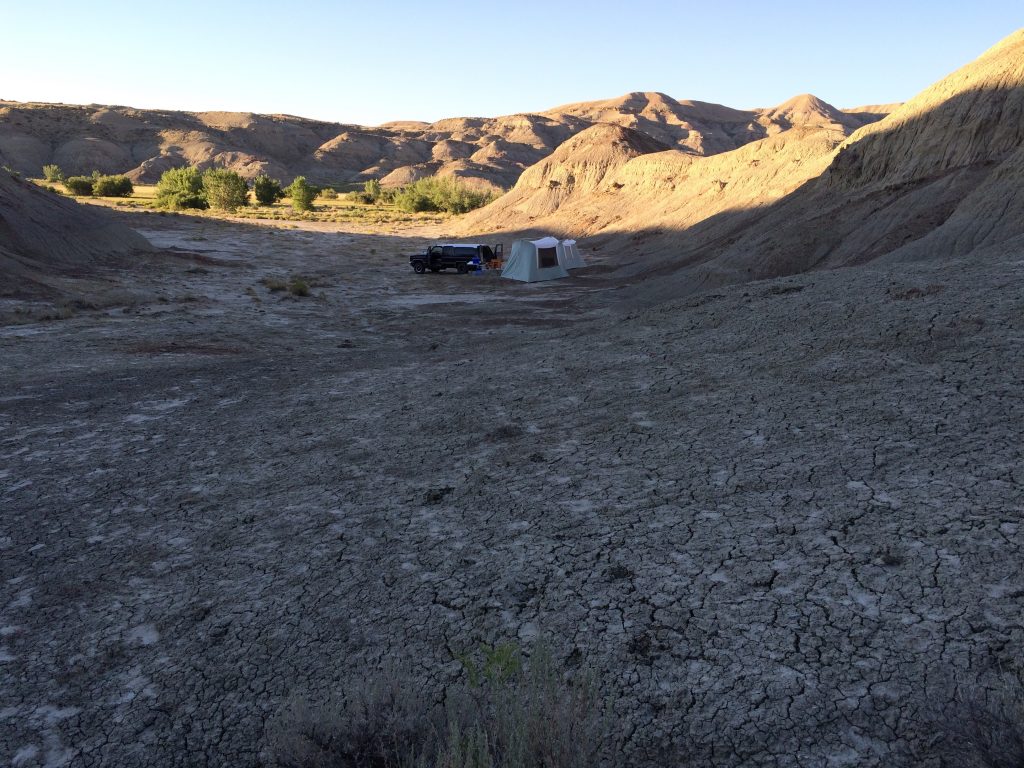
A view across the second campsite of the season as the sun is coming up. Tucked into a small valley to try and shelter from the wind. Getting ready to pack everything up into the truck on the last day at this camp. Image credit Scott Wing.
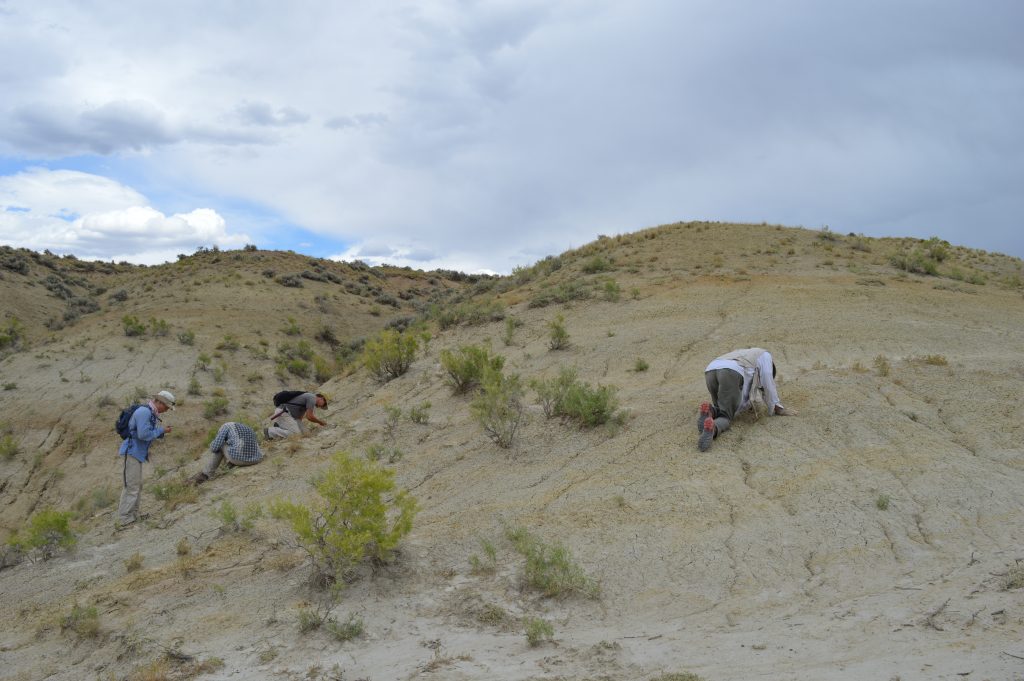
Scott (right) and vertebrate palaeontologists from the University of Florida and Duke university, scouring the surface for teeth and bone fragments of PETM age mammals. Mammal fossils preserved in these paleosols tend to weather out and collect around little cracks on the surface, but they can still be tricky to find. Image credit Laura Soul.
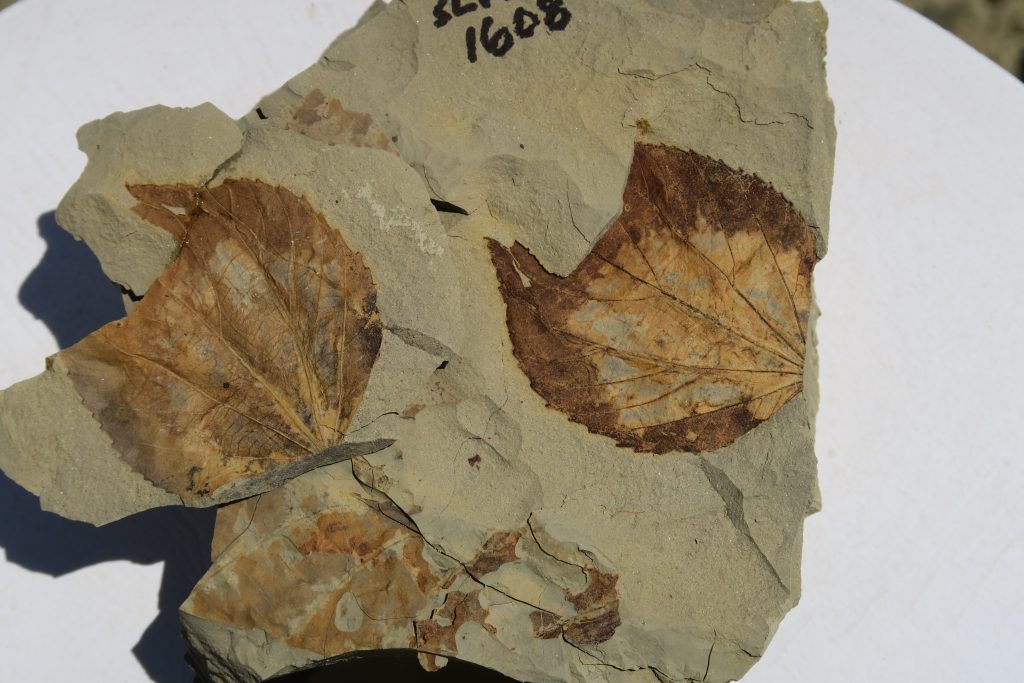
A beautifully preserved fossil leaf (Populus wyomingiana) from the PETM. Rock covering the apex of the leaf will be carefully removed back in the lab. Image credit Scott Wing.
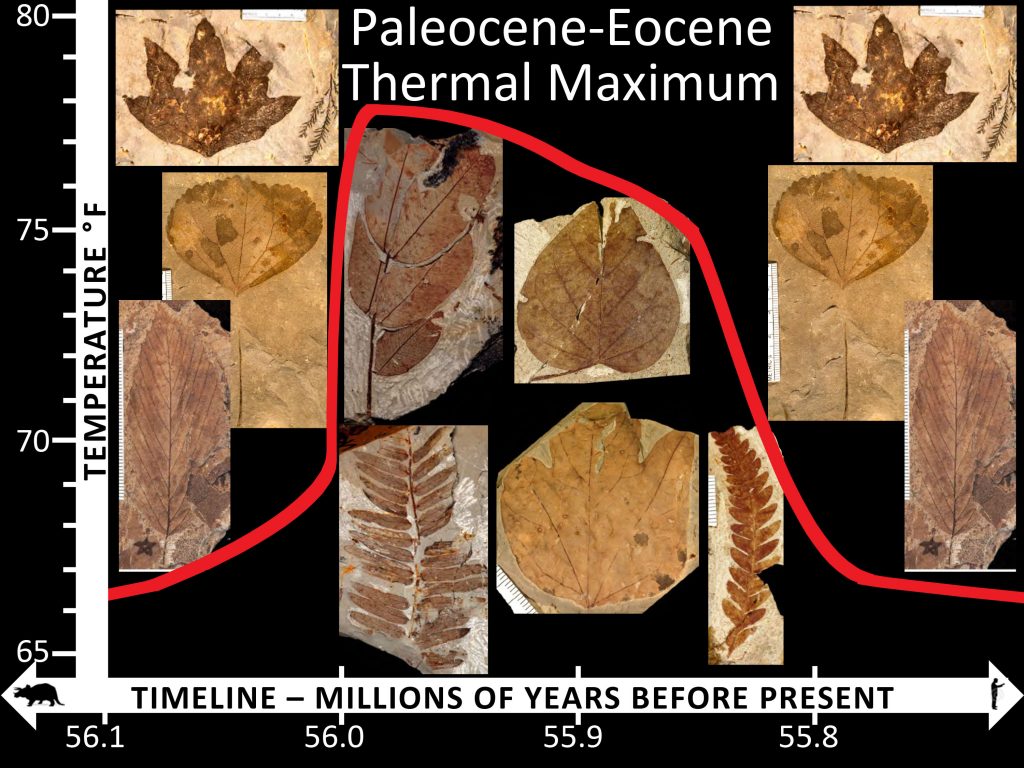
Plants before and after the PETM were very similar, whereas those during the event look completely different. The temperature rose by about 5 degrees celsius very rapidly and stayed higher for around 100,000 years. Image credit Scott Wing.
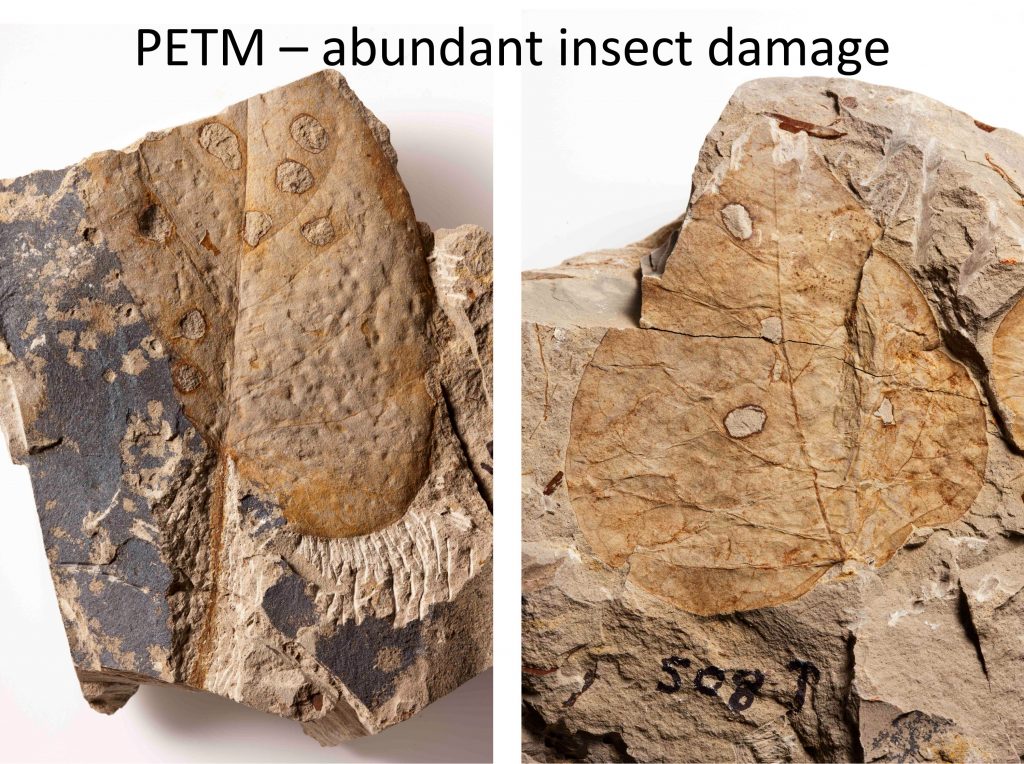
Insect damage is extremely common in PETM leaf fossils, unlike in the preceding and subsequent time periods. These leaves show clear holes where insects had eaten them, some leaves are almost completely destoyed, leaving only the veins before burial and preservation. Image credit Scott Wing.
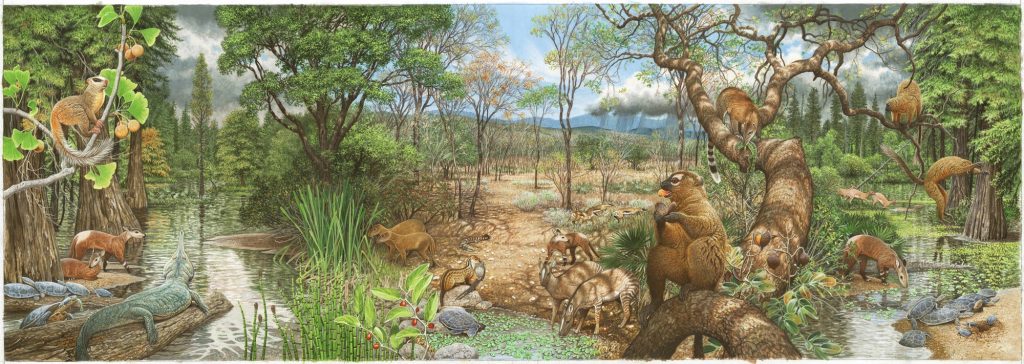
Artists impression of the ecosystem during the PETM, it includes early primates and many ungulate species as well as a wide variety of plant species that favoured the drier hotter climate. Image credit Aldo Chiappe for National Geographic.
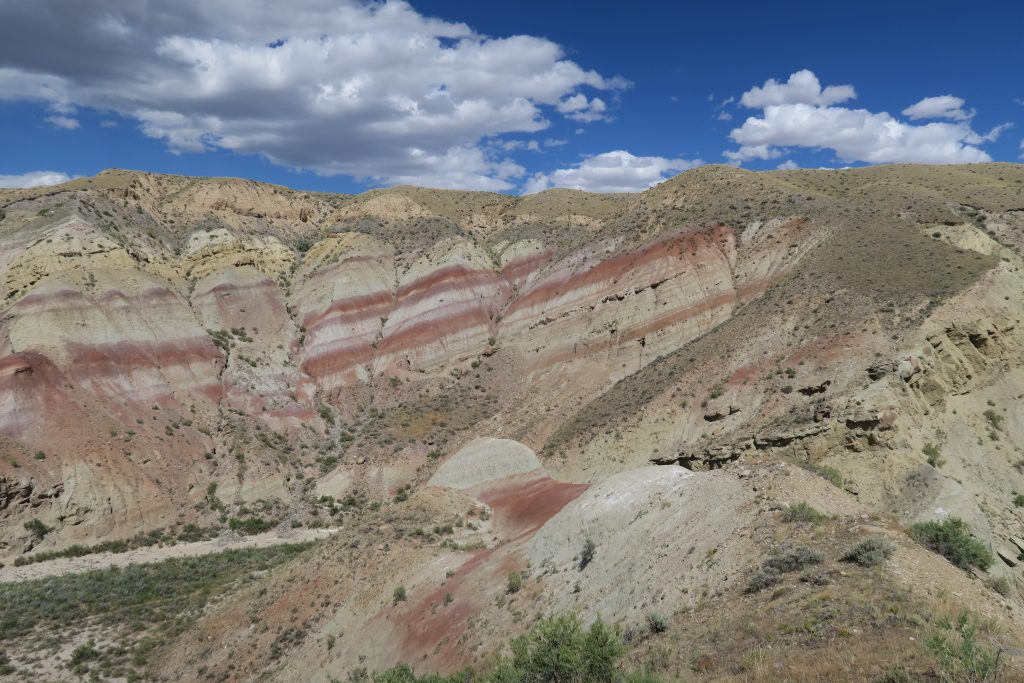
Possible area of PETM beds, the brightly coloured layers can be traced around the basin making it easier for researchers to work out what time period the rocks are from. Image credit Scott Wing.
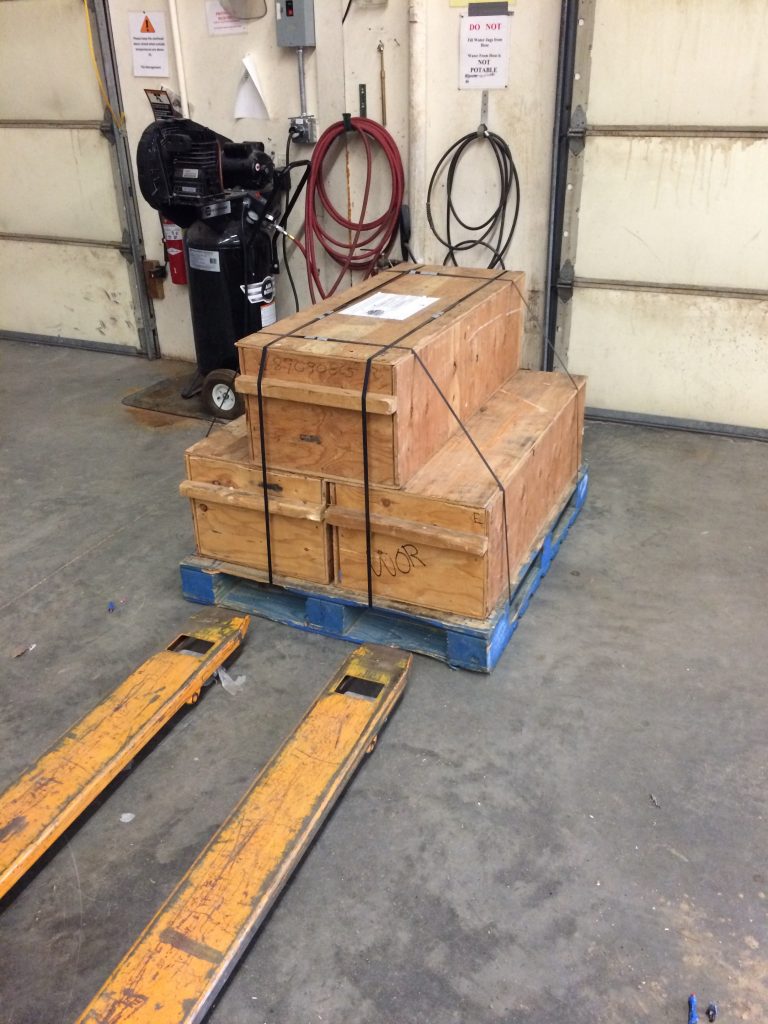
Three crates full of double wrapped fossil plants ready to be transported from Wyoming back to the Smithsonian on the other side of the country. Image credit Scott Wing.
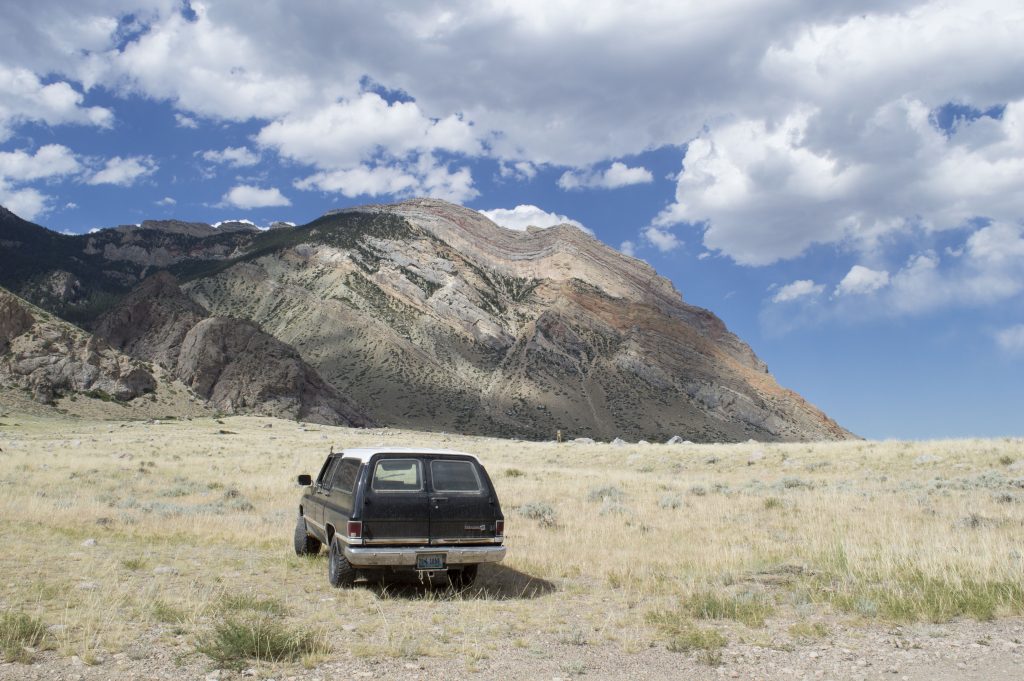
The field vehicle in the Clarksfork canyon, right at the edge of the basin at the base of the mountains that surround it. Here a river has cut through the layers of rock so their steep dip (towards the right of the photo) can be seen. The large basin bounding fault line runs along the front of this hill, the rocks are all dipping down (in some places the rock layers are vertical) as they are deformed by movement on the fault. Image credit Laura Soul.

